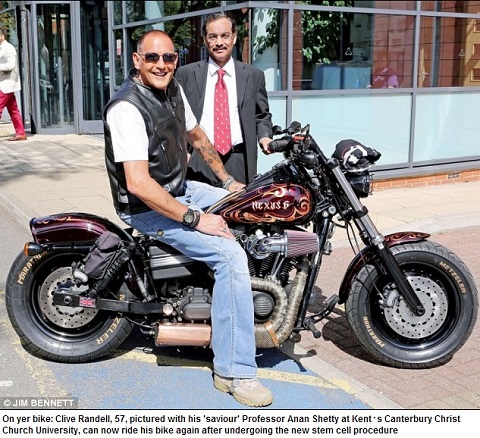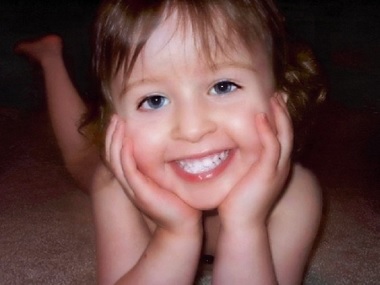• Clive Randell, 57 injured his leg in a motorcycle accident in 2011
• His entire life changed from that day forward
• He lost his income, his job and his girlfriend
• Now, thanks to a new stem cell procedure, he can ride his bike again
• Adult stem cells from his own bone marrow were blended with gel and this combination then glued the bone.
• The results were profound
Source: www.dailymail.co.uk
A pioneering stem cell procedure to repair fractured bones could provide a lifeline for accident victims facing the amputation of a limb.
The development involves harvesting stem cells, a person’s own stem cells. These ‘master’ cells are able to transform into any kind of body tissue. They are taken from the patient’s own bone marrow. In this procedure, they were then blended with a specialty gel and the solution was injected into the damaged bone.
One patient already benefiting is lifelong motorcycle enthusiast Clive Randell who suffered horrific injuries to his left leg when his Harley-Davidson was rammed by a car in 2011.
He suffered multiple open fractures, leaving bone protruding through the skin, and extensive skin loss. Doctors repeatedly told him his leg would have to be amputated.
Today, Clive, 57, is back on his feet – and, astonishingly, also his bike – thanks to the ground-breaking stem-cell treatment.
He says: ‘I may never dance the tango, but, thanks to Professor Shetty, I will be able to get as near to normal as possible.’
There are 350,000 serious fractures admitted to hospitals in the UK every year.
Five to ten per cent fail to heal, leading to multiple operations, bone-grafting and, if these treatments fail, potentially amputation. Previously, the lack of blood and DNA in a fractured bone has meant newly introduced cells have no way of ‘signalling’ the damaged cells to regenerate.
This new treatment overcomes this obstacle.
‘These “miracle” cells are abundant in bone marrow, so may be harvested, concentrated and applied with a collagen ‘scaffold’ into an area of poor healing.’
Bone marrow is drawn from the patient’s pelvis using a hollow needle. This marrow contains a mixture of stem cells, red blood cells and blood-forming cells.
This actual operation is performed under a general anaesthetic. It takes only 30 minutes and the patient can walk in and then go home on the same day. To date, it has been carried out successfully on six patients in the UK, four in India and twenty in South Korea.
‘These experiments have shown that collagen can trigger the transformation of stem cells into bone forming cells,’ says Professor Anan Shetty, Deputy Director of Minimally Invasive Surgery at Kent’s Canterbury Christ Church University.
‘It’s a win-win situation.’
Clive’s Experience
In the 18 months after his accident, Clive, a high-altitude window cleaner from Orpington, Kent, had a cage screwed to his damaged leg, three bone grafts and a raft of other procedures.
As a result of the accident (for which the driver of the car was successfully prosecuted) and the medication prescribed, he lost his job, his girlfriend and most of his money. At one stage he contemplated suicide.
At his wits’ end, Clive – who had never been admitted to hospital in his life – turned to the internet and typed in the search box ‘I want to save my leg’.
He came across Prof Shetty’s name, and says he is still in a state of disbelief over the reversal in his fortunes since having the operation in 2012.
‘Six hours after the operation, Professor Shetty told me to get up and go for a walk,’ he says. ‘After being in and out of hospitals, I really couldn’t believe it.
‘I’d suffered 15 months of being told there was a good chance I was going to lose my leg, yet eight weeks after the procedure I was told to start putting weight on it and to walk as much as I could.
‘It still hurts to walk long distances, but that will improve.
‘My foot is turned out a little bit to the side and I have a limp, but that’s a small price to pay to keep my leg.
‘My hope is this procedure will eventually be available to everyone, since it can help so many people, particularly the military.
‘The old way of mending broken bones is so painful and stops you getting on with your life.
‘Professor Shetty’s stem cell surgery is quick and almost painless, so it’s important more people hear about it.’







